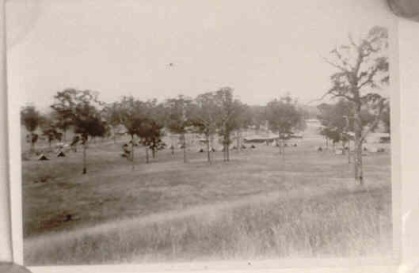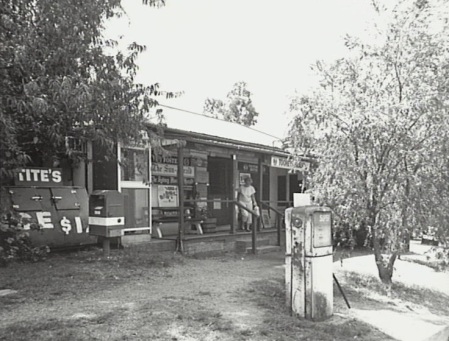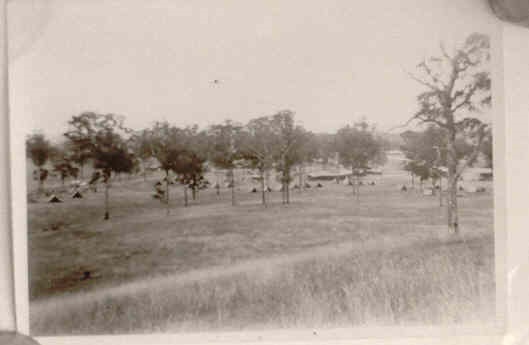
Narellan Military Camp occupies an important place in Narellan Military Heritage although in the overall picture of the Second World War the Camp was not of great military importance. In the national story it does not appear in Gavin Long’s Official History of the Second World War and there are very few references to the camp were found in the various unit histories.Yet the story of local men and women are very important and they add to the colour of the area’s military history.
Horse transport
In the early months of the camp’s operation the most common form of transport were horses. Horses have a long and glorious role in Australian military forces. There were mounted troops dating back to 1804 in colonial New South Wales with the New South Wales Corps. The Crimean War prompted the formation of mounted infantry troops in the colonies. Mounted ‘bush’ troops were sent by the colonies to support the British military in the opening months of the Boer War. Then there is the formation of the Australian Light Horse in 1902 and their service in the First World War.
At Narellan Military Camp the delivery of provisions, and firewood for cooking, from the central quartermasters’ store, near the Camp Headquarters, was carried out to all areas of the camp by horse transport. The four wheeled wagon pull by two horses was a very common site in most army camps of the period, partly because of the shortage of petroleum fuel. These wagons were apparently some of the transport equipment that had been mothballed from World War One.[1] A lot of the firewood for the Camp, which was used in the cooking stoves, was cut in the scrub at the back of Cobbitty and Wallgrove.[2]

The army is good for business
The presence of military in the local area benefitted many local businesses. Soldiers, and airmen from Camden Airfield, spent money in the local area. A number of local businesses won contracts to supply the army and air force with supplies and equipment.
Out at Cobbitty Fred Small owned the general store/newsagency with paper run/post office agency. He reported that his turnover rose from £30 per month to £300 per month in 1939, with mainly local sales. He would go to Narellan to pick up papers and mail and deliver to the military camp on his way back to Cobbitty in the afternoon. He used a small A Model Ford Utility for deliveries. On weekdays he would sell 500 – 1000 papers, with local sales only being 200 papers. On Sundays he would sell 1200 – 1500 papers at the camp.
For a shop the monthly tobacco and cigarette issue was 3 cartons of cigarettes and 2lb of tobacco. Mr Small reports that within 18 months he was selling 85lb of paper and tobacco – `an enormous amount of cigarettes’ – he had a `good’ business with the military camp. He maintains that Camden shops would have had a similarly good business from the military.
Mr Small reports that if the soldiers were on a route march through Cobbitty they would send a runner ahead and he would open up his shop. One such occasion he opened up at 11:00pm and sold lots of soft drinks and cigarettes. There would be up to 2 – 3 marches through Cobbitty per week and most would have break at the shop.

Mr Small reported that in late 1943 all the men moved out of the camp one night and he was left with 1000 newspapers and Section C owed him £300 for meat and food.[3]
Soldiers also came into Camden. Arthur Colman reports that quite a few from the camp would go for an evenings leave across country to Camden for a few beers. Steak and eggs occasionally and be back in camp by midnight. He goes on that the local people made AIF personnel feel that they were made very welcome. [4]
Entertaining the troops
Many soldiers came into Camden to the movies and hotels in their spare time. At the camp entertainment was provided at the Camp a mobile cinema unit operated by the Woods Bros, from Manila. They travelled to the camps in the area (Narellan, Ingleburn, Wallgrove) and had an open air picture show once a week at Narellan. Newspapers were sold outside the canteen. A recreation room in the CENEF Hut, near the Camp Headquarters, was used for playing ping pong, writing letters, reading and lectures and listening a radio organised by Captain Webb, the Camp Adjutant. He made arrangements with Radio Rentals for the hire of a small mantle radio, from a special fund which he organised at the Canteen. Bailey reports that it was great to be able to listen to the ABC News at 7:00pm, as well as Dad and Dave, Martins Corner and other radio shows. [5]
The Salvation Army, which initially used the CENEF Hut, had a welfare unit staffed by a Captain who was a World War One veteran. As they became established the pastor established a marque in the south-eastern corner of the Camp on Cobbitty Road. Reports indicate that the service was greatly appreciated and it was a wonderful organisation for the troops.[6]
Local troops in camp for training
The Camden News reported that local Camden men were in camp at Narellan undergoing three months training in the 1st Light Horse (Machine Gun) Regiment Reserve. They included:
Lieut. John Downes.
Sergeants C. Parker and Arundel.
Corporals K. C. Smart, I. Hum phries, Steele and Stoves.
Troopers C. Dengate, H. Dunk, W. I Driscoll, Coveney, R. Dudgeon, J. Mc Intyre, F. Clifton, A. Porter, W. Sweeney; McCoy, G. Moles, L. Small, R, Small, F. Byrne, E. Richardson, E. Reynods, A. Biddle, S. Crane, L. Fitzpatrick, K. Crisp, Kirkpatrick, Smith, Hull, McDonald, Burgan, Budgeon, Rutter, Darling, Dowel, Mitcherson, Barrett, O’Neil, Wilson, Darel.[7]
[1]. Alan Bailey, Interview, 1 November 1992
[2]. Alan Bailey, Letter to ICW, 11 August 1988
[3]. Fred Small, Interview, 13 January 1987
[4]. Arthur Colman, Letter to ICW, 15 January 1987
[5]. Alan Bailey, Letter to ICW, 11 August 1988; Interview, 1 November 1992;
[6]. Alan Bailey, Letter to ICW, 11 August 1988; Interview, 1 November 1992;
[7] Camden News, 6 February 1941.



The 6 Machine Gun Battalion was formed at Narellan Camp 22 Aug 1942 – They were there for just one month before moving to Wallgrove Camp – John Campbell – President/Historian 6 Machine Gun Battalion Association